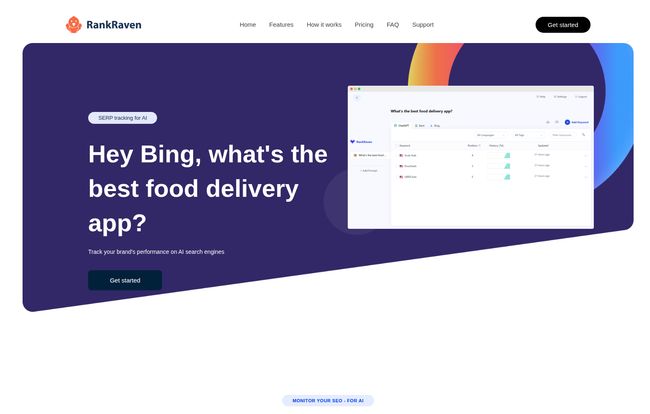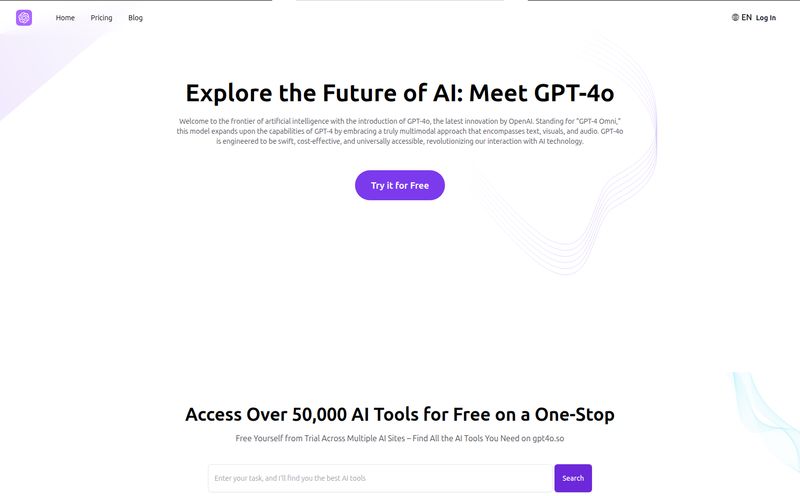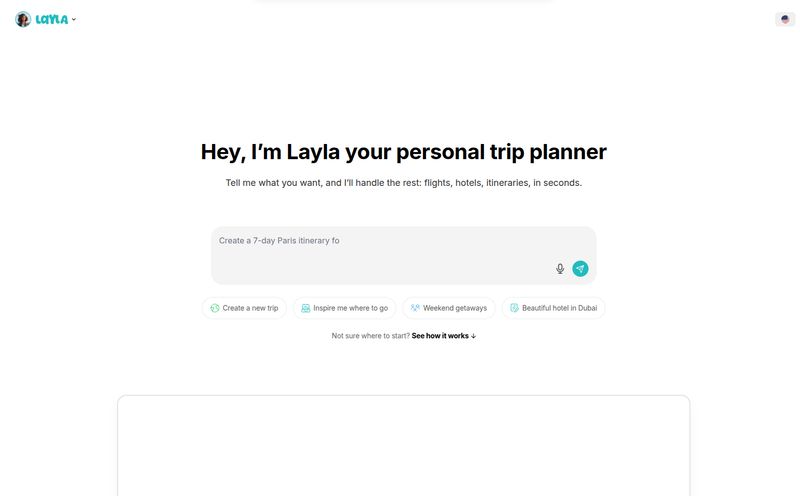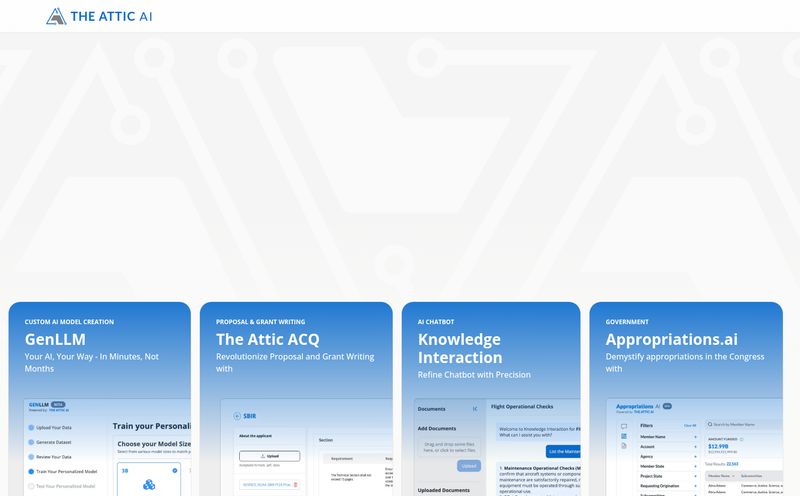For the past year, my inbox and social feeds have been a constant drumbeat of one thing: AI. Specifically, how AI is going to either save or completely destroy SEO as we know it. We've all seen the hot takes, the panicked LinkedIn posts, and the 'expert' webinars promising to demystify it all. It’s a lot of noise.
For years, we've had our trusty tools. Ahrefs, SEMrush, Moz... they're like old friends. We know their quirks, we trust their data (mostly), and we've built our workflows around them. We track our rankings, our backlinks, our traffic, and we report back to our clients or bosses with pretty charts that show the little green arrow going up. Simple enough.
But then came the chatbots. The Search Generative Experience (SGE). The conversational answers that pull information from who-knows-where and present it as fact. And a new kind of anxiety set in for us SEO folks. My biggest question wasn't 'Is AI taking my job?' but a much more practical one: How in the world do I track our visibility in this new space?
It feels a bit like trying to chart a course in a thick fog. You know the destination is out there, but you have no instruments. That’s why, when I stumbled upon a tool called RankRaven, I was immediately intrigued. It promised to be a SERP tracker, but for AI. A compass in the fog. So, naturally, I had to see what it was all about.
So, What Are We Even Doing Here? A Quick Word on AIO
Before we get into the tool itself, let's be on the same page. This isn't your grandpa's SEO anymore. We're now talking about AIO (AI Optimization) or LLMO (Large Language Model Optimization). It's the art and science of getting your brand, your products, your stuff mentioned favorably in the answers generated by models like ChatGPT, Google's Gemini (formerly Bard), and Bing Chat.
Unlike traditional SEO, where you're fighting for a spot in a list of 10 blue links, here you're fighting for a mention within a narrative. A single, authoritative-sounding paragraph. The rules are different, the feedback loop is nonexistent, and a lot of the old tactics don't directly apply. It’s messy. And that's precisely the problem RankRaven claims to solve.
Dipping My Toes In: A First Look at RankRaven
The first thing that struck me about RankRaven was its simplicity. In a world of overly complex SaaS dashboards that look like the cockpit of a space shuttle, this was a breath of fresh air. The landing page gets right to the point: "Hey Bing, what's the best food delivery app?" It immediately frames the exact problem we're all facing.
The whole setup process, as they outline it, seems ridiculously straightforward:
- Create a prompt: This is the question you want to track. Think like a customer. Not just "SEO tools," but "What are the best SEO tools for a small business?"
- Add your keywords: This is your brand name, your competitors' names, whatever you want to keep an eye on.
- Let them do the heavy lifting: RankRaven then pings the AI models every day to see if and where your keywords show up in the answer.
That's it. It’s designed to be the 'canary in the AI coal mine' for your brand. You set it up, and it chirps at you via email when something changes.

Visit RankRaven
The Core Features That Actually Matter
So, beyond the simple setup, what's under the hood? A few things stood out to me as genuinely useful, not just marketing fluff.
First is the multi-model support. They track OpenAI's ChatGPT, Microsoft Bing, and Google Bard (now Gemini). This isn't just a nice-to-have, it's critical. The user base is fragmented. Your target audience might be using Google's AI on their Android phone, Bing Chat integrated into their work browser, or just messing around with ChatGPT. You can't just optimize for one; you need visibility across the board. Seeing how your brand performs differently on each is gold.
Next are the daily rank updates and email notifications. I don't have time to manually type 50 different prompt variations into three different chatbots every single morning. Nobody does. The automation here is the entire value proposition. Getting a simple email that says, "Hey, you dropped out of the answer for 'best coffee subscriptions' on Bing" is immediately actionable information.
And finally, the progress tracking and visualization. We SEOs are visual creatures. We love a good line graph. Seeing your rank—or your mention's position in the text—plotted over time is how you spot trends. It’s how you can go to your boss and say, "See that spike? That's when we updated our 'About Us' page with the new E-E-A-T guidelines. It's working." It turns abstract AIO efforts into concrete data.
Let's Talk Money: The RankRaven Pricing Tiers
Okay, the part everyone always scrolls down to first. The price. How much does this magic compass cost? RankRaven has a pretty standard three-tiered SaaS model. Let's break it down.
| Plan | Price | Best For | Tracked Prompts |
|---|---|---|---|
| Starter | $49 / month | Individuals & Solopreneurs | 25 |
| Business | $99 / month | Small Businesses & In-house Teams | 50 |
| Agency | $349 / month | Agencies managing multiple clients | 250 |
My take? The pricing feels... reasonable, given the novelty and importance of the problem it's solving. For an agency, $349 to monitor prompts for a bunch of clients is a no-brainer. It's a new service offering and a powerful retention tool. For a solo business owner, $49 a month might feel a little steep, but if just one good mention drives a few high-value customers, it pays for itself. It's an investment in future-proofing your brand's visibility.
The Good, The Not-So-Good, and The Future
No tool is perfect, especially a new one. Let's be real about it.
The Good stuff is obvious: It’s a focused, automated solution to a brand-new, headache-inducing problem. It tracks the big three AI models, and the interface looks clean and simple. I'm a big fan of tools that do one thing and do it well, rather than trying to be a bloated, all-in-one suite. RankRaven knows exactly what it is.
The Not-So-Good (or 'Room for Improvement'): It's a new tool on the block. That means there's always the potential for bugs or quirks as they scale. The biggest drawback for me, right now, is the limited language support. The site says 40+ languages are "coming soon," and for international SEOs, that can't come soon enough. If your market is primarily non-english, you'll have to wait this one out.
But that "coming soon" tag also hints at something positive. It shows they're actively developing and thinking ahead. I'd rather see a focused tool with a clear roadmap than a stagnant one. It tells me they're listening to the market's needs.
Final Thoughts: Is RankRaven a Must-Have?
So, is RankRaven the silver bullet for AIO? No, of course not. There is no silver bullet. The real work still involves creating amazing content, building authority, and understanding your audience. That never changes.
But what RankRaven offers is a scorecard. A way to measure your efforts in this bizarre new arena. It gives you the data you need to stop guessing and start making informed decisions. For anyone serious about their brand's long-term visibility, ignoring AI search is not an option. It's like ignoring mobile back in 2012. You can do it, but it wont end well.
In my opinion, getting a tool like this now isn't about catching up; it's about getting ahead. It's about building your AIO strategy on a foundation of data, not just hope. And in the foggy, unpredictable world of AI search, a little bit of data can make all the difference.
Frequently Asked Questions
- Why do I actually need RankRaven? Can't I just check myself?
- You could, but AI model answers are inconsistent and can change daily. Manually checking dozens of prompts across three platforms every day isn't feasible. RankRaven automates this and provides historical data, so you can see trends instead of just a single snapshot.
- Do the AI model answers really change that often?
- Yes, surprisingly often! Models are constantly being updated, and the information they pull from the web is always changing. A mention you have today could be gone tomorrow. Daily tracking is pretty important to catch these shifts.
- Which specific AI models are you tracking?
- As of now, RankRaven tracks the big three: OpenAI's ChatGPT, Microsoft Bing Chat, and Google's Bard/Gemini. This covers the majority of the current user landscape for generative AI search.
- Is the pricing per user or for a whole team?
- The pricing seems to be based on the plan and the number of tracked prompts, not per-seat. The Business and Agency plans are explicitly designed for teams and managing multiple clients, respectively.
- What if I need to track more than 250 prompts?
- The website doesn't show a plan beyond the Agency tier, but most SaaS companies like this offer custom enterprise plans. Your best bet would be to contact their support team directly to discuss your specific needs.



